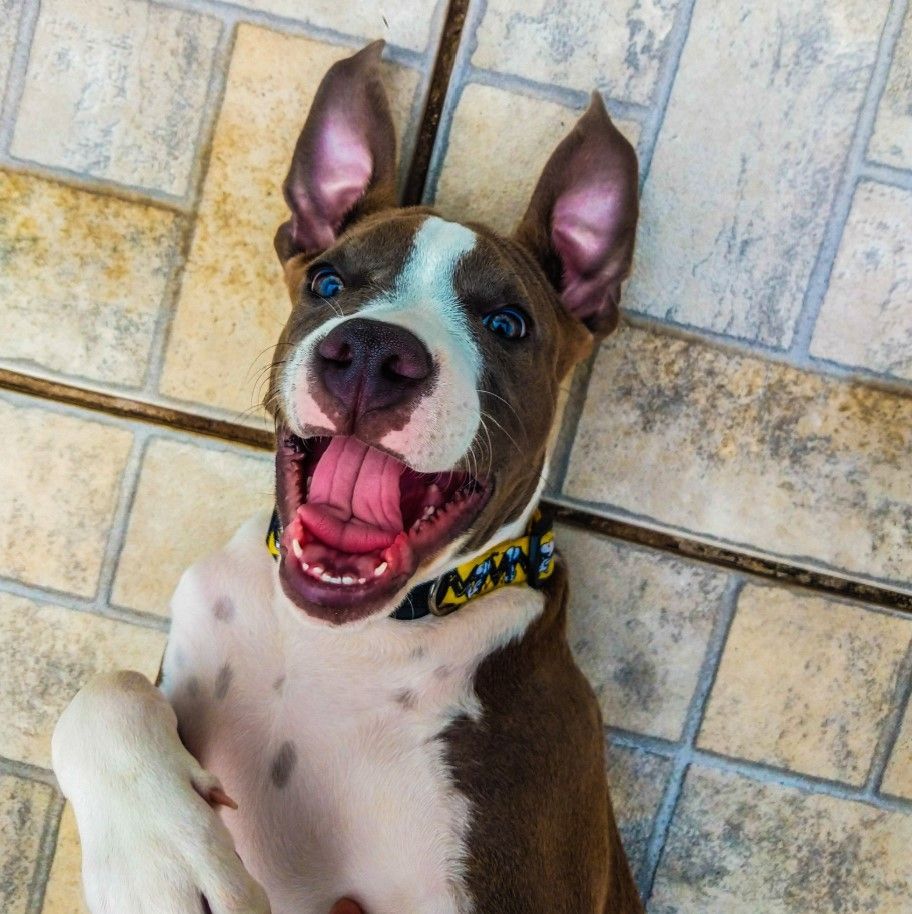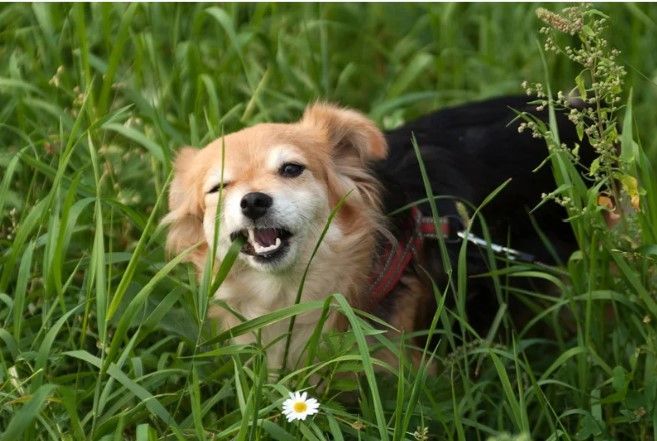How to Crate Train an Adult Dog or Puppy
What is Crate Training?
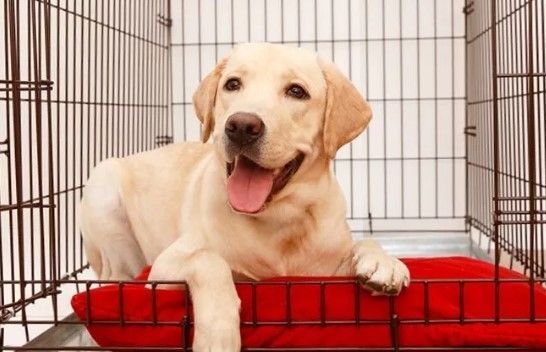
Crate training is a super popular and effective way to train your puppy or dog to become ultra relaxed in their crate or kennel. Most crates are usually small, enclosed spaces that imitate the feeling of a den-like environment for your furry friend. The training process involves gradually introducing your pooch to the crate and, most importantly, teaching them to associate it with super positive experiences!
Dog crates provide a safe and comfortable space for your furry friend and they can also help with potty training, preventing destructive behaviour and reducing anxiety.
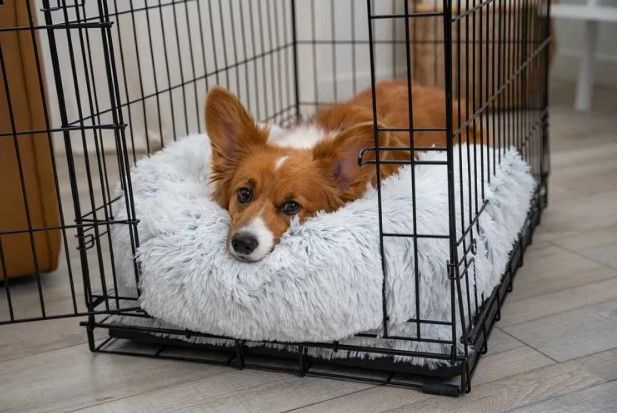
What are the Benefits of Crating a Dog or Puppy?
Crate training (when done properly and with care!) can provide an array of benefits for both dogs and their owners alike. Here we have listed some of the great benefits of crate training:
Housetraining: One of the best things about crate training is its effectiveness in house training puppies. Dogs will naturally avoid soiling their sleeping area, and crate training helps establish a space where they can learn to control their bladder and bowel movements. By using the crate as a tool for confinement and supervision, owners can create a consistent routine for taking their dog outside for bathroom breaks.
Safety and Security:
Crates create a safe and secure space for your dog. It provides them with a special area where they can retreat to when they feel they need some downtime or want to relax.
Travel and Transportation: Crate training makes traveling with your dog so much easier and, of course, safer! A crate-trained dog will be far more comfortable, safe and secure during their adventures in the car, reducing the chances of anxiety or stress-related behaviours. It also allows for easy containment when staying in hotels, visiting friends or family, or going to the vet.
Facilitating Training and Boundaries: A crate can help in training by providing set structure and boundaries. It helps teach your dog to settle down and relax when necessary, as well as reinforcing house rules.
Managing Separation Anxiety: For dogs prone to separation anxiety, crate training can be really beneficial. When properly introduced, a crate can become a familiar and comforting space for your dog, which may help alleviate anxiety when left alone. The crate serves as a den-like environment where they can feel secure and protected, promoting a sense of calmness.
Preventing Destructive Behavior:
When left unsupervised, dogs can sometimes engage in some destructive behaviors such as chewing furniture or (sometimes expensive!) household items. Crate training helps prevent such behavior by confining your dog to a safe space where they cannot get into trouble.
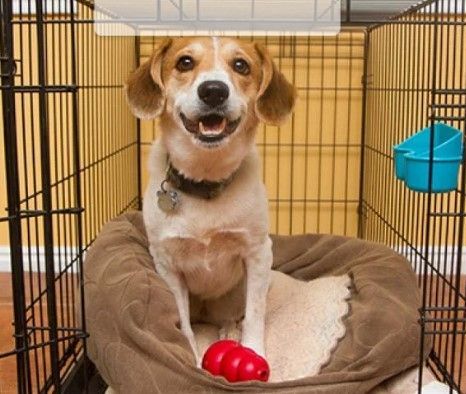
Is the Process for Crate Training an Adult Dog and Puppy Different?
The process for crate training can be slightly different for an adult dog and a puppy due to their differing levels of development, understanding, and bladder control. However, the basic principles of crate training remain the same. Here's a wee overview of the process for crate training both an adult dog and a puppy.
How To Crate Train an Adult Dog?
Choose the right dog crate: Select a crate that has good ventilation, a secure door and one that is large enough for your canine companion to stand up, turn around, and lie down comfortably.
Encourage exploration: Encourage your dog to explore the crate voluntarily by placing treats or toys near the crate and gradually moving them inside over time. Give your dog lots of praise and rewards for entering their crate voluntarily on their own!
Positive associations: Associate positive experiences with the crate starting with feeding your dog’s meals near the crate then move the bowl inside the crate gradually over time. Another super easy, and successful, way for them to associate positive vibes with their crate is to give them treats when they are inside the crate.
Short and Positive Crate Experiences: Initially, keep the crate door open and allow your dog to come and go freely. Gradually increase the time your dog spends in the crate, starting with just a few seconds and extending the time as they start to become comfortable.
Close the Crate Door: Once your dog is comfortable being in the crate, start closing the door for short periods while they are inside and then start gradually increasing that time. Stay nearby and offer them praise and treats through the crate door to continue creating positive associations with their crate.
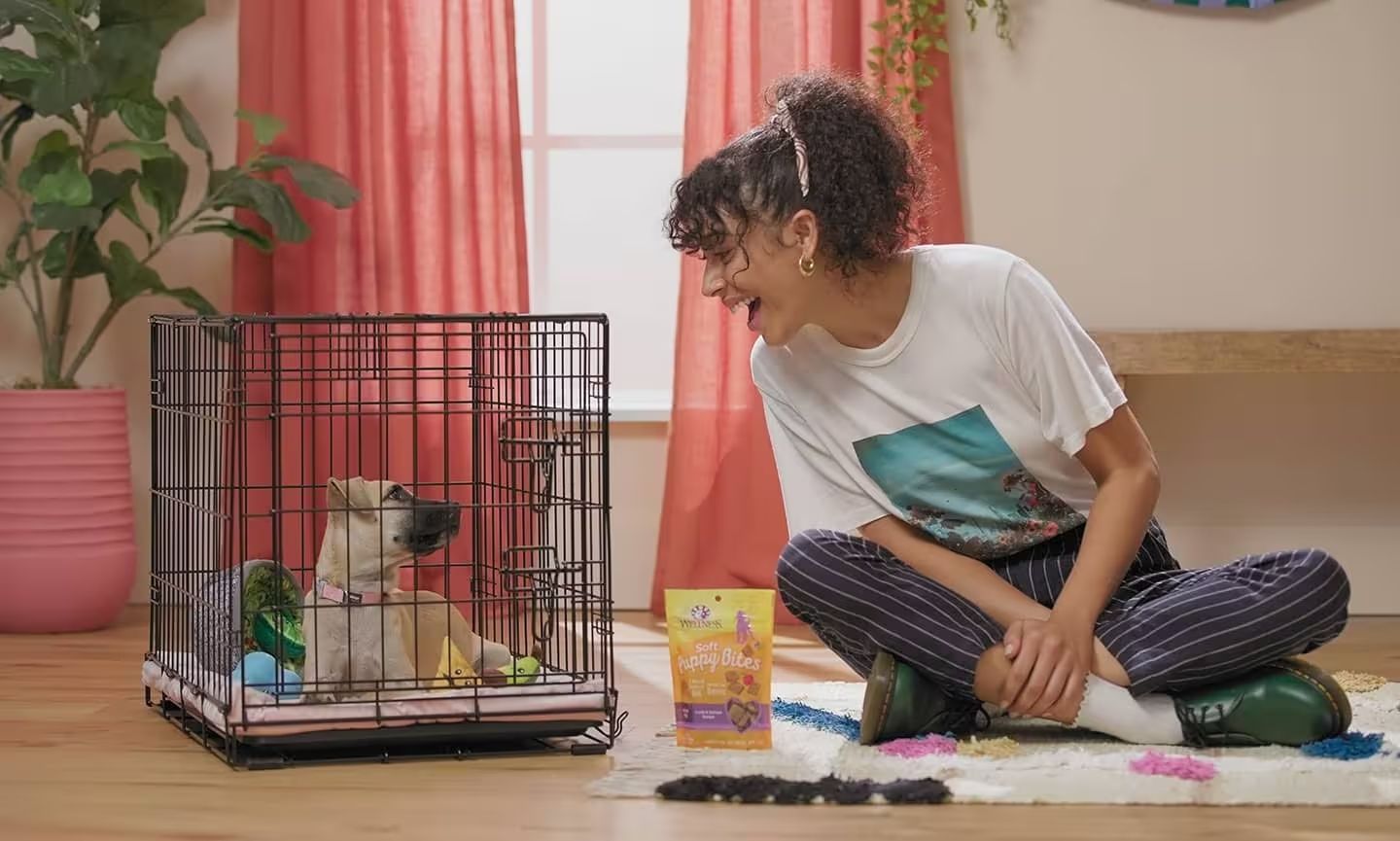
Gradual Alone time: Begin by leaving your dog alone in the crate for short periods while you are at home still and gradually start extending that time as they become more comfortable and relaxed in their crate. This helps them adjust to being alone in a safe and comfortable environment.
Desensitizing Departure Cues:
This is a really good one! Practice using departure cues such as picking up your keys or putting on your coat or shoes without actually leaving. This desensitises your dog to these cues and reduces anxiety surrounding your real departures.
Gradual Departures:
Start leaving the house for short periods at a time and then start gradually increasing the time you are away. It is best to ensure your dog has had some exercise and mental stimulation before being popped into their crate to help reduce any sort of restlessness (Stimulation toys can also be a great boredom killer!)
Avoid punishment: The crate should always be a positive and safe space so you never want to use the crate as a form of punishment or force your dog into the crate. This can create negative associations with the crate and make them less likely to use it willingly. Instead, use positive reinforcement and patience to encourage them to use the crate on their own.
How to Crate Train a Puppy
Keep in mind the methods used above to crate train an adult dog as they are still very useful when crate training your puppy (particularly the one relating to not using the crate as a means of punishment) but there are a few differences in the approach and expectations when crate training each age group.
Choose an appropriate puppy crate:
Select a crate that is large enough for your puppy to stand, turn around, and lie down comfortably but not so big that they can use one end as a bathroom and the other as a sleeping area!! Make sure to choose a crate made of sturdy materials, with a secure latch, and proper ventilation.
Introduce the crate: Place the crate in a quiet area of your home where your puppy can see and smell it and allow your puppy to explore the crate at their own pace. Leave the crate door open and encourage them to enter by placing treats, toys, or their bed inside.
Feeding near the crate: To create positive associations, feed your puppy near the crate, gradually moving the food bowl closer to the crate over time. This will help your puppy associate the crate with positive experiences.
Gradual confinement: Once your puppy is comfortable entering the crate, start closing the door for short periods while you are present. Stay nearby and offer treats and praise to reassure them. Gradually increase the duration of these confinement periods.
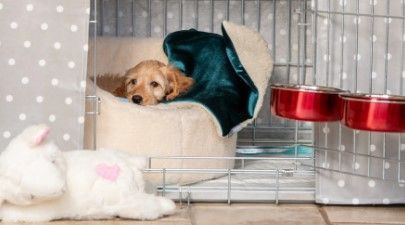
Bedtime in the crate: Nearing bedtime, keep the last interactions with your puppy calm and minimize playtime to signal that it's time to rest and ‘wind down’ for the night. When it's time for bed, place your puppy in the crate with a comfortable blanket and a chew toy. You can cover the crate with a blanket to create a den-like environment, which can help them feel secure. It can be helpful to provide a ticking clock or a white noise machine nearby as this mimics the sound of their littermates.
Responding to whining: Your puppy is most likely going to whine or cry during their first nights in the crate. If your puppy starts whining, avoid immediately responding or taking them out, as it usually reinforces the behaviour. In other words they learn “when I whine or cry, I get attention and let out”. Instead, wait for a moment of quiet and then reward the silence with praise or a treat. Gradually increase the time between rewards, so your puppy learns to self-soothe.
Frequent bathroom breaks: Puppies have small bladders and limited control of them so they will most likely not be able to handle long periods in the crate without needing a bathroom break including during the night. Set an alarm to wake up and take your puppy outside to the designated potty area. Keep interactions calm and minimise playtime to discourage your puppy from getting too stimulated. Although it may not sound ideal to get up during the night to take your pup out to the toilet, dogs naturally do not wish to relieve themselves where they live and sleep and you do not want your puppy to become comfortable with the idea that going to the toilet near their living space is something of the norm.
Conclusion
To sum it all up, crate training is an excellent way to train your puppy and provide them with a safe and comfortable space of their own. With a little patience and positive reinforcement, your pup will soon learn to love their crate and see it as a cosy den.
It's essential to introduce crate training gradually and in a positive manner, ensuring the crate is a comfortable and inviting space for your dog. The crate should never be used for punishment, instead reward positive behaviour to create a positive association with the crate.
Keep in mind the methods used here to crate train an adult dog as they are still very useful when crate training your puppy (particularly the one relating to not using the crate as a means of punishment) but there are a few differences in the approach and expectations when crate training each age group.

